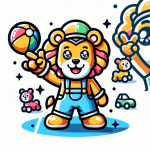Over the years, the digital revolution has dramatically impacted different sectors, including education and child care. Online platforms providing essential resources for child care and development have emerged as a significant tool in shaping childrens growth and learning journey. These platforms have mitigated accessibility problems, opened new learning channels, and facilitated child care and development to an unprecedented level. This article will explore the undeniable benefits these platforms bring.
Digital Accessibility To Information
The most significant advantage of online platforms is the accessibility they offer. Parents can readily access a wealth of information regardless of their geographical location. This includes access to developmental milestone checklists, creative activities, educational games, and expert advice on various aspects of child care and development. Whether its a small inquiry about child behavior or a significant question about developmental disorders, you have a solution just a click away.
Flexible Learning Opportunities
Online platforms bring a fresh level of flexibility and diversity in teaching methods, which can accommodate each childs unique learning style. They can engage with the content iteratively, rewind, pause, and take their time to understand concepts better. Additionally, parents can adapt the resources to correspond with the child's pace, preferences, and skill level.
Fostering Parental Involvement
Engaged parents are significant contributors to childrens healthy development. By providing resources, tips, and advice, digital platforms empower parents to make informed decisions about their childs care and development. Such platforms can also increase the interaction between parents and their children. By participating in educational games, activities, or joint exploration of interests, parents get the opportunity to engage actively in their childs learning journey.
Ready-to-use Learning Material
These platforms are often equipped with a wide range of developmentally appropriate, engaging, and educative content. This content can include animated videos, storybooks, puzzles, and quizzes designed to stimulate cognitive development, enhance motor skills, boost language acquisition, and foster socio-emotional development. These resources eliminate the need for parents to scour numerous sources for quality, age-appropriate material, saving them considerable time and effort.
Expert Advice and Guidance
Seeking expert advice is no longer solely dependent on physical visits to a child psychiatrist or psychologist. Parents or caregivers can now consult expert articles, watch informative videos, or even interact with professionals directly through webinar sessions. Online platforms often offer Q&A sections, where parents can seek expert responses to their questions. This opens up an avenue for accessible, informed guidance about any and all aspects of child care and development.
Community Support
One overlooked yet essential aspect of online platforms is the sense of community. Often, these platforms will have parent forums or communities where experiences, concerns, and advice can be shared. This can lessen the feeling of isolation that many parents may experience, and create an environment of mutual learning and support.
Setting The Path For Lifelong Learning
Digital platforms can set the groundwork for children to become lifelong learners. They come into contact with technology, learning how to use it for educational purposes. This, in turn, teaches them to care for their development independently as they grow older. It nurtures their curiosity, self-learning, and problem-solving skills.
In conclusion, online platforms providing essential resources for child care and development offer a wealth of benefits, from readily accessible expert advice and materials to autonomous and flexible learning. They pave the way for empowered parenting, active engagement, and tailored, quality education for children. While these platforms indeed present a valuable tool for todays parents and caregivers, it is also crucial to pair these with traditional methods of teaching and visuals and engage children through a balanced mix of resources for holistic development.


leave a comment